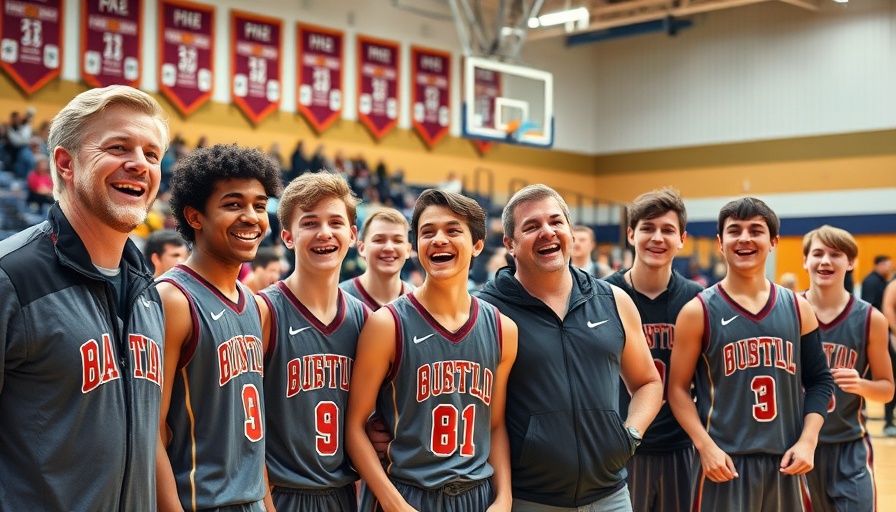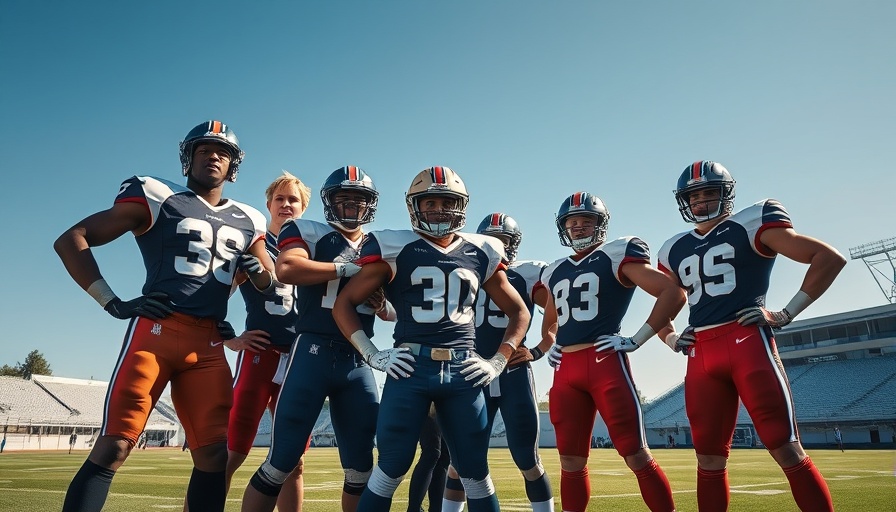Update Orange County's High School Sports on the Verge of Change
As Orange County high schools grapple with the soon-to-be-revisited releaguing process for the 2026-27 and 2027-28 academic years, a critical juncture is being reached. The CIF Southern Section's recent decision to reject the preliminary proposal by local principals has sent shockwaves through the community, igniting discussions about fairness, competition, and the future of youth sports. The rejection means that school leaders must reconvene and devise a new approach swiftly.
One of the most controversial placements sparked much debate: Laguna Beach's forced alignment with schools in north Orange County, such as Brea and Fullerton, which many felt undermined the spirit of community and competitive balance. Schools like Crean Lutheran have thrived in their new league configurations, winning league titles, but the question remains whether everyone's interests are being adequately addressed. What Happens Now? The Next Steps for Orange County
In response to the outcry following the relabeling, Laguna Beach high school officials filed an appeal, which was notably supported by the CIF Southern Section with an emphatic 18-0 vote to revise the league arrangements. This development suggests a pivotal moment for Orange County’s athletic landscape as the CIF Southern Section executive committee requires schools to undergo the releaguing process again. The implications of this could reshape school rivalries and community ties.
The focus is now on crafting a reflective approach for all involved. For instance, one proposal could be to reposition Laguna Beach into a more suitable environment, the Coast View Conference, where it would compete alongside other schools from South County. This move could facilitate a more positive experience for all student-athletes, contrasting sharply with the earlier divisive decision. The Trinity League: Balancing Tradition and Inclusivity
The expansion of the Trinity League to include five smaller private schools raises questions about the league's commitment to diversity and representation. While schools like Rosary have managed to find their niche, others may struggle in leagues designed primarily for larger institutions. Balancing tradition and inclusivity will be the litmus test for the Trinity League's reputation moving forward, directly impacting competition levels and community support. Community Impact: More Than Just Sports
Ultimately, the outcomes of these releaguing decisions transcend athletic performance. They resonate deeply within the broader context of community sentiments and school pride. Sports often serve as a common denominator, knitting together diverse populations through shared experiences, which is crucial for community cohesion.
While athletic officials focus on competitive structures, it’s essential to consider how decisions affect local pride and identity. Sports can unite communities, promoting collaboration and camaraderie among students, parents, and local residents, and decisions should reflect a “kids first” mentality. A successful realignment of leagues could elevate school spirit and invite a closer connection among community members. Heat and Safety: An Urgent Concern
As the school year kicks off, safety measures are equally vital to consider amidst the decisions on releaguing. The CIF mandates strategies for regulating practice and game activities based on heat levels, putting student-athlete welfare at the forefront. The implementation of the WetBulb Globe Temperature tool can help administrators gauge environmental conditions effectively. Implementing widespread protocols will not only ensure safety but also enhance student engagement and participation. Start of a New Era?
The reinstatement of the Pacific Coast Conference caters to the region's schools that might not fit within larger, more aggressive leagues, maintaining an ecosystem where students can thrive competitively and socially. As the deadline for submitting proposals looms on August 28, there is a pressing urgency for school administrators. Following that, principals will vote on the configurations the week of September 8, which then requires backing from the CIF-SS Council and a final nod in the council meeting on September 25.
This journey toward a revised proposal serves as a galvanizing moment for Orange County’s schools, compelling educators, athletes, and families to consider what kind of environment they want for young athletes. The merger of fairness with fierce competition could enhance sportsmanship and allow each school to showcase its strengths in a manner that accentuates rather than diminishes the values at the heart of youth sports.
The robust conversations happening now among local leaders signal an important transition in how Orange County high schools approach athletic competitions, setting the stage for an inclusive and dynamic future.
As the processes unfold, the community is invited to engage in discussions surrounding these classifications. From school officials to passionate fans, everyone plays a role in shaping the future of Orange County athletics.

 Add Row
Add Row  Add
Add 




Write A Comment